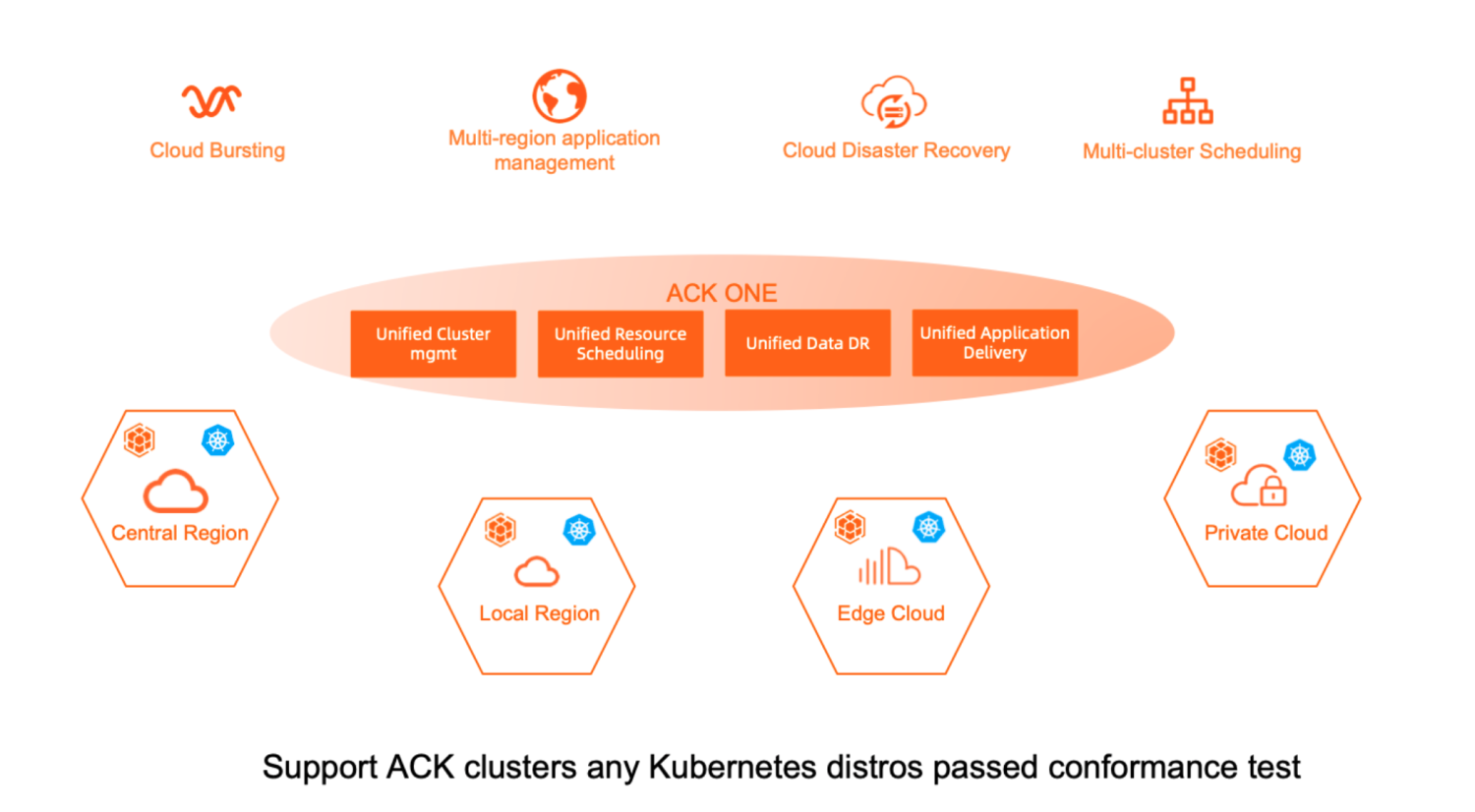You can use a Distributed Cloud Container Platform for Kubernetes (ACK One) Fleet instance to deploy an application to multiple clusters and manage multi-cluster gateways. This topic describes how to build a Fleet management system in ACK One.
Scenarios
Use ACK One Fleet instances to manage Container Service for Kubernetes (ACK) clusters across Alibaba Cloud accounts.
Use ACK One Fleet instances to manage Kubernetes clusters across cloud computing platforms, including Kubernetes clusters deployed on the public cloud and Kubernetes clusters deployed in data centers.
Benefits
ACK One provides a unified user interface and a set of API operations that you can use to manage and maintain clusters, computing resources, networks, storage, security, monitoring, logs, jobs, applications, and traffic.
ACK One can automatically scale cloud resources to handle traffic fluctuations. You can also set ACK One to scale cloud resources at the specified time. This improves the cost-effectiveness of your business.
The backup center is an out-of-the-box feature provided by ACK One to protect applications and application data. This feature allows you to migrate an application together with the application data across regions. You can also use this feature to deploy an application on multiple servers for high redundancy.
ACK One can distribute applications, schedule jobs, and manage network traffic across all regions. This helps enterprises build a secure, standardized, and advanced IT framework for cloud-native applications based on business architecture and data management requirements.
ACK One allows you to quickly deploy enterprise-class products or components that are verified by Alibaba Cloud in large-scale computing scenarios in Kubernetes clusters. This allows you to enhance security, improve scheduling efficiency, and accelerate AI computing and big data computing.
Architecture

Considerations
When you use an ACK One Fleet instance to centrally manage ACK clusters, manage ACK clusters across accounts, or manage Kubernetes clusters on other cloud computing platforms, take note of the following items:
To manage ACK clusters across accounts or manage Kubernetes clusters on other cloud computing platforms, you need to use an ACK registered cluster to connect the clusters to a control plane that belongs to the same Alibaba Cloud account as the ACK One Fleet instance.
Make sure that the ACK One Fleet instance can access the API server of the ACK registered cluster. We recommend that you create a registered cluster in the same region and virtual private cloud (VPC) as the ACK One Fleet instance.
When you connect to an ACK registered cluster over the Internet to manage ACK clusters across accounts or manage Kubernetes clusters on other cloud computing platforms, make sure that the registered cluster can access the ACK One Fleet instance over the Internet.
Procedure
Cluster A is created within Alibaba Cloud Account A and Cluster B is created within Alibaba Cloud Account B. An ACK One Fleet instance is created within Alibaba Cloud Account A to manage Cluster A and Cluster B.
Step 1: Create a registered cluster in ACK One and connect Cluster B to the registered cluster
Create a registered cluster named ExternalCluster B in in the VPC in which Cluster A resides and connect Cluster B to the registered cluster. For more information, see Create a registered cluster in the ACK console.
Step 2: Enable the ACK One Fleet management feature
Enable the ACK One Fleet management feature in the VPC where Cluster A resides. For more information, see Enable multi-cluster management.
If Cluster B within Alibaba Cloud Account B cannot communicate with the ACK One Fleet instance over the internal network, you need to select Create and Associate EIP when you enable the Fleet Management feature.
By default, a Fleet instance is automatically created after the Fleet management feature is enabled.
Step 3: Associate clusters with the Fleet instance
Associate Cluster A and ExternalCluster B with the Fleet instance. For more information, see Manage associated clusters.